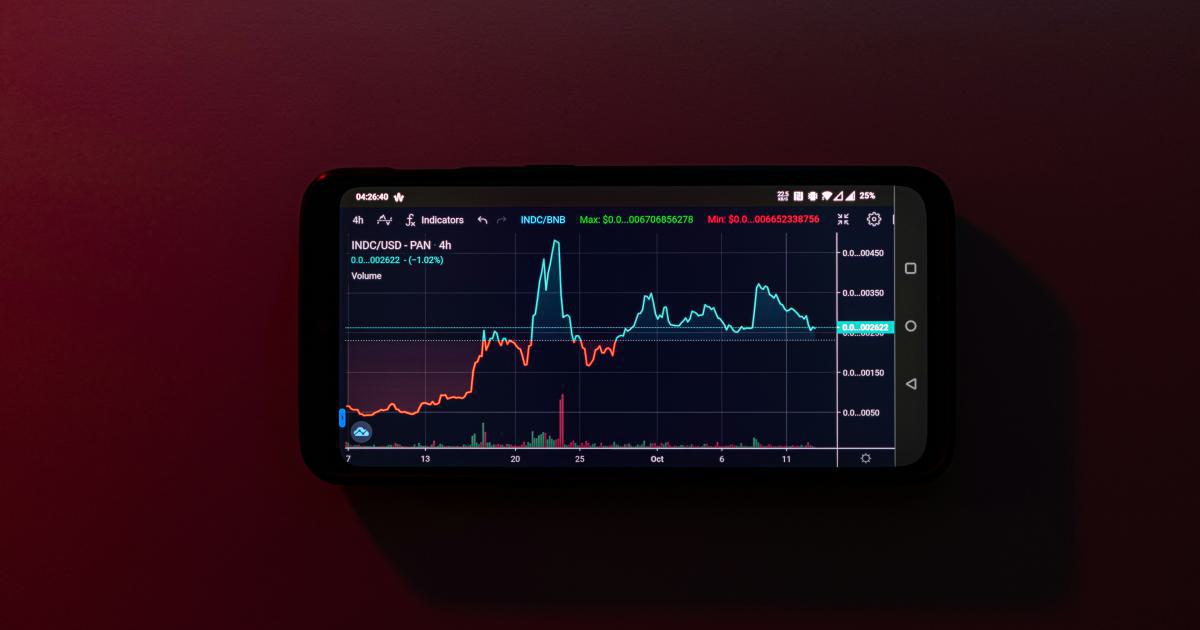Dominate SERPs with Advanced Brand Queries Metrics


Unlock the Power of Brand Queries Metrics
In the ever-evolving digital landscape, staying ahead of the competition requires a deep understanding of your online presence. One crucial aspect of this is mastering the art of brand queries metrics. These metrics provide invaluable insights into how your target audience is engaging with your brand, and can be the key to dominating the search engine results pages (SERPs).
The Importance of Brand Queries Metrics
Brand queries refer to the specific search terms and phrases that users employ to find your brand online. These queries can range from your brand name to related products, services, or even industry-specific terms. By analyzing these metrics, you can gain a wealth of information about your brand's visibility, engagement, and overall online performance.

Leveraging brand queries metrics can yield several benefits for your business:
Understand Brand Awareness: Tracking the volume and trends of brand-related searches can provide valuable insights into the level of awareness and recognition your brand enjoys among your target audience.
Optimize Online Visibility: By identifying the most popular brand queries, you can ensure that your website and online content are optimized to rank highly for these searches, improving your chances of being discovered by potential customers.
Enhance Content Strategy: Brand queries metrics can inform your content creation and distribution strategies, helping you develop more relevant and engaging content that resonates with your audience.
Monitor Reputation and Sentiment: Analyzing the sentiment and context behind brand-related searches can help you identify and address any potential reputation issues or negative perceptions about your brand.
Outperform Competitors: Understanding how your brand compares to competitors in terms of search visibility and engagement can guide your strategic decision-making and help you stay ahead of the curve.
Mastering Brand Queries Metrics
To dominate the SERPs with your brand's online presence, you need to dive deep into the world of brand queries metrics. Here's a comprehensive guide to help you get started:
Identifying Relevant Brand Queries
The first step in leveraging brand queries metrics is to identify the relevant search terms and phrases that your target audience is using to find your brand online. This process involves:
Conducting Keyword Research: Use a comprehensive keyword research tool, such as Google Keyword Planner or Ahrefs, to uncover the most popular brand-related keywords and phrases.
Analyzing Search Trends: Utilize tools like Google Trends to understand the historical and current search patterns for your brand, as well as related topics and terms.
Engaging with Your Audience: Gather feedback from customers, social media followers, and other stakeholders to understand how they search for and refer to your brand.

By compiling a comprehensive list of brand-specific queries, you can begin to analyze the performance and trends associated with each term.
Tracking and Analyzing Brand Queries Metrics
Once you have identified the relevant brand queries, it's time to dive into the metrics. Key performance indicators (KPIs) to track and analyze include:
Search Volume: Monitor the overall search volume for your brand-related queries to gauge the level of interest and demand.
Click-Through Rate (CTR): Analyze the CTR for your brand-related search results to understand how effectively your online presence is driving traffic.
Organic Rankings: Track your brand's organic rankings for the identified queries to ensure your content is being discovered by your target audience.
Conversion Rate: Evaluate the conversion rate of users who find your brand through search, as this can indicate the effectiveness of your online marketing efforts.
Branded vs. Non-Branded Queries: Differentiate between searches for your brand name and more general, non-branded queries to gauge the overall strength of your brand recognition.
Sentiment Analysis: Monitor the sentiment and context behind brand-related searches to identify potential reputation issues or areas for improvement.

By closely monitoring these metrics, you can identify trends, spot opportunities, and make data-driven decisions to enhance your brand's online visibility and performance.
Optimizing for Brand Queries
Leveraging the insights gained from your brand queries metrics, you can implement a range of optimization strategies to dominate the SERPs:
On-Site Optimization: Ensure your website's content, structure, and metadata are fully optimized for your brand-related search terms, making it easier for search engines to understand and rank your pages.
Content Creation: Develop high-quality, informative content that addresses the needs and queries of your target audience, covering topics and keywords related to your brand.
Link Building: Establish a strong backlink profile by earning links from reputable, relevant sources, which can boost your brand's authority and visibility in search results.
Local SEO: If your brand has a physical presence, optimize your local listings and citations to improve your visibility in local search results.
Social Media Presence: Maintain an active and engaging social media presence, as this can help amplify your brand's online footprint and influence search engine rankings.
Reputation Management: Monitor and address any negative sentiment or brand-related issues, ensuring your online reputation remains strong and positive.

By implementing these strategies, you can effectively optimize your brand's online presence and dominate the SERPs for your most valuable search queries.
Advanced Brand Queries Metrics and Strategies
As your understanding of brand queries metrics deepens, you can explore more advanced techniques to further enhance your brand's online performance.
Competitor Analysis
Analyzing your competitors' brand queries metrics can provide valuable insights into their online strategies and help you identify areas where you can outperform them. Key steps in this process include:
Identifying Competitors: Determine the brands that are most relevant to your industry and audience, as these are likely to be your primary competitors in the search landscape.
Monitoring Competitor Metrics: Track the search volume, rankings, and engagement metrics for your competitors' brand-related queries to understand their strengths and weaknesses.
Identifying Gaps and Opportunities: Pinpoint areas where your brand is underperforming compared to your competitors, and develop strategies to address these gaps.
Proactive Positioning: Leverage your brand queries insights to position your brand as the preferred choice among your target audience, capitalizing on any vulnerabilities in your competitors' online presence.

By closely monitoring your competitors' brand queries metrics, you can gain a competitive edge and position your brand as the go-to choice in your industry.
Multi-Location Brand Optimization
If your brand has a presence in multiple locations, it's essential to optimize your brand queries metrics for each local market. This involves:
Localized Keyword Research: Identify the brand-related search terms and phrases that are most relevant to each of your target locations, taking into account local language, culture, and search patterns.
Localized Content Creation: Develop location-specific content, such as landing pages, blog posts, and social media updates, to address the unique needs and queries of each local audience.
Local Search Engine Optimization: Ensure your brand's local listings, citations, and other local SEO factors are optimized to improve your visibility in location-based search results.
Cross-Location Coordination: Maintain consistency in your brand messaging and online presence across all your locations, while still tailoring your approach to the specific needs of each market.

By adopting a localized approach to brand queries metrics, you can maximize your brand's visibility and engagement in each of your target markets, ultimately driving more targeted traffic and conversions.
Voice Search Optimization
As voice-activated devices and virtual assistants continue to gain popularity, it's crucial to optimize your brand's presence for voice search queries. This includes:
Identifying Voice Search Queries: Analyze the types of questions and conversational phrases that users might use to search for your brand or related topics using voice commands.
Optimizing for Natural Language: Ensure your website's content, FAQ sections, and other relevant pages are optimized for natural language and conversational queries, rather than just keyword-focused content.
Leveraging Structured Data: Implement structured data markup on your website to provide search engines with clear, machine-readable information about your brand, products, and services, making it easier for voice assistants to surface your content.
Monitoring Voice Search Performance: Track the visibility and engagement of your brand in voice search results, and make adjustments to your optimization strategies as needed.

By optimizing your brand's presence for voice search, you can reach a growing segment of your target audience and stay ahead of the curve in this rapidly evolving aspect of digital marketing.
Leveraging Brand Queries Metrics for Ongoing Success
Mastering brand queries metrics is an ongoing process that requires continuous monitoring, analysis, and optimization. To ensure long-term success, implement the following strategies:
Integrating Brand Queries into Your Overall SEO Strategy
Treat brand queries metrics as a core component of your overall search engine optimization (SEO) strategy. Align your brand-focused efforts with your broader content, technical, and off-site optimization initiatives to create a cohesive, high-performing online presence.

Continuous Monitoring and Adjustment
Regularly review your brand queries metrics, track changes over time, and make adjustments to your strategies as needed. This may involve updating content, refining your targeting, or addressing any emerging reputation or visibility issues.
Collaboration and Cross-Team Alignment
Foster collaboration between your marketing, SEO, and customer experience teams to ensure a holistic approach to brand queries optimization. Align your efforts and share insights to drive more impactful, data-driven decisions.

Leveraging Brand Queries Insights for Broader Marketing
Extend the value of your brand queries metrics beyond just SEO. Use these insights to inform your content marketing, advertising, social media, and other digital marketing initiatives, creating a more cohesive and effective brand strategy.
By adopting a comprehensive, data-driven approach to brand queries metrics, you can consistently dominate the SERPs, build stronger brand awareness, and drive sustainable growth for your business.